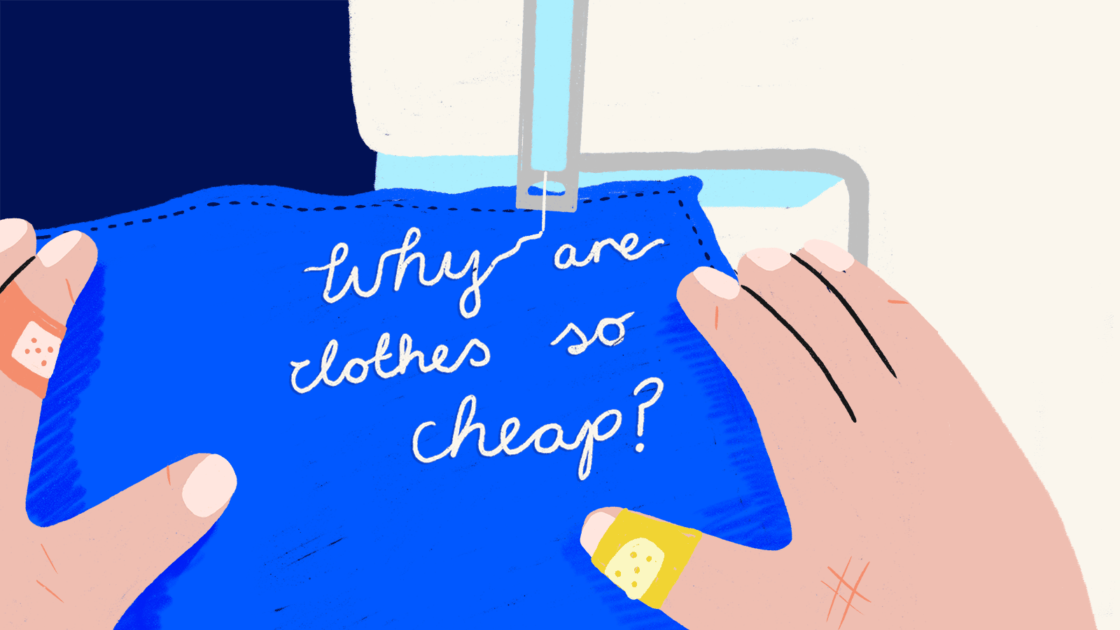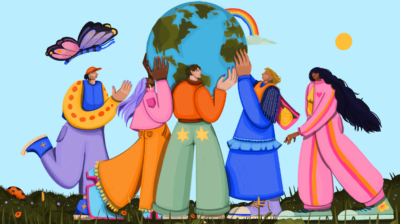Where do my clothes come from? – The price of cheap clothing
Find out the many reasons why our clothes are sold so cheap and what you can do to help support garment workers and make a difference.


Everyone wears clothes, and a lot of us get our clothes from fast fashion brands that sell clothes for low prices. For many people, the cheap price of clothing makes it easier and more accessible for them to get the things that they need.
However, there is a downside to this large volume of cheap clothing. How could a company possibly afford to sell a t-shirt for under €5 when they have to pay for the material, electricity, dyes, sewing machines, transport, waste disposal and pay the person making the item?
Why are some clothes so cheap?
The reason clothes are so cheap in high street shops and in many online stores is because the people who make the clothes are paid very low wages (around €2 a day in some cases, according to the Clean Clothes Campaign) and are often exploited. Unfortunately, this is not a recent discovery or issue. For decades, clothing sold in many popular shops in Ireland have been made in countries where workers rights are sparing or non-existent.
Clothing factories are often based in countries where the minimum wage is between half to a fifth of the living wage (which would allow an adult an acceptable standard of living). Many garment factory workers receive below that minimum wage and work for long hours, in dangerous conditions. They often have to work 14 to 16 hours a day, with no days off.
The fashion industry requires low skilled work, meaning children can often end up working in these conditions too.
Exploitation in the fashion industry
Fast fashion brands often excuse their poor treatment of workers by claiming that they are providing work to people who need it. However, paying such a low wage is still taking advantage of people who have no choice but to accept any salary, even in poor conditions. And when labour laws protecting workers rights improve in one country, production can move to another.
There are also cases of people being forced to work at certain stages of the supply chain. For example, a report in the New York Times revealed that in Uzbekistan, one of the largest cotton exporters in the world, in autumn around one million adults and children are forced to leave their jobs and schools to pick cotton.
Unsafe conditions in garment factories
The health and safety of garment workers gained worldwide attention in 2012 when there were large factory fires in Pakistan and Bangladesh killing hundreds. In 2013, a garment factory in the Rana Plaza building in Bangladesh collapsed, killing over a thousand workers and highlighting the unsafe conditions they are often forced to work in.
Since then the Accord on Fire and Building Safety in Bangladesh, a legally binding agreement between brands and trade unions, has made progress towards a safe and healthy garment and textile industry in Bangladesh. However, exploitation continues to be hidden deep in the production chain and in other countries.
The COVID-19 pandemic created even more injustices for garment workers, as declining orders and a shortage of materials closed factories in places like Bangladesh, Cambodia and Vietnam – putting garment workers into extreme poverty with no compensation. It came close to home too, when garment workers in Leicester, England were forced to work through lockdowns, despite high numbers of infections, according to a report from The Guardian.
Does sustainable fashion make a difference?
Is boycotting fast fashion going to help garment workers or will it put them out of a job?
Buying sustainably isn’t going to solve the problem overnight, and for many, it can seem like an unaffordable dream. However, by making informed decisions about your clothes, by educating the people around you and by being vocal about the issues that are present within the fashion industry, brands will start to realise that their customers are informed, ethical and responsible and that in order to remain popular, they need to be too.
You can help garment workers by:
- Supporting responsible fashion campaigns like Clean Clothes Campaign and Fashion Revolution
- Supporting campaigns to improve garment workers conditions like War on Want, Labour Behind the Label, Remake, The Circle
- Sign petitions pushing for brands to pay for the goods they order. The Worker Rights Consortium has a tracker that shows which companies have paid for their orders and which have not.
- Using your buying power to support better brands and choosing second hand as much as possible
- Making noise and educating others on the issue
- Donating to funds that support garment workers with food parcels and masks
- Join activist groups online or in your community to keep up to date with news on garment worker rights and help to campaign for better conditions.
Cover image by Cathy Hogan
Feeling overwhelmed and want to talk to someone?
- Get anonymous support 24/7 with our text message support service
- Connect with a trained volunteer who will listen to you, and help you to move forward feeling better
- Whatsapp us now or free-text SPUNOUT to 50808 to begin.
- Find out more about our text message support service
If you are a customer of the 48 or An Post network or cannot get through using the ‘50808’ short code please text HELLO to 086 1800 280 (standard message rates may apply). Some smaller networks do not support short codes like ‘50808’.






